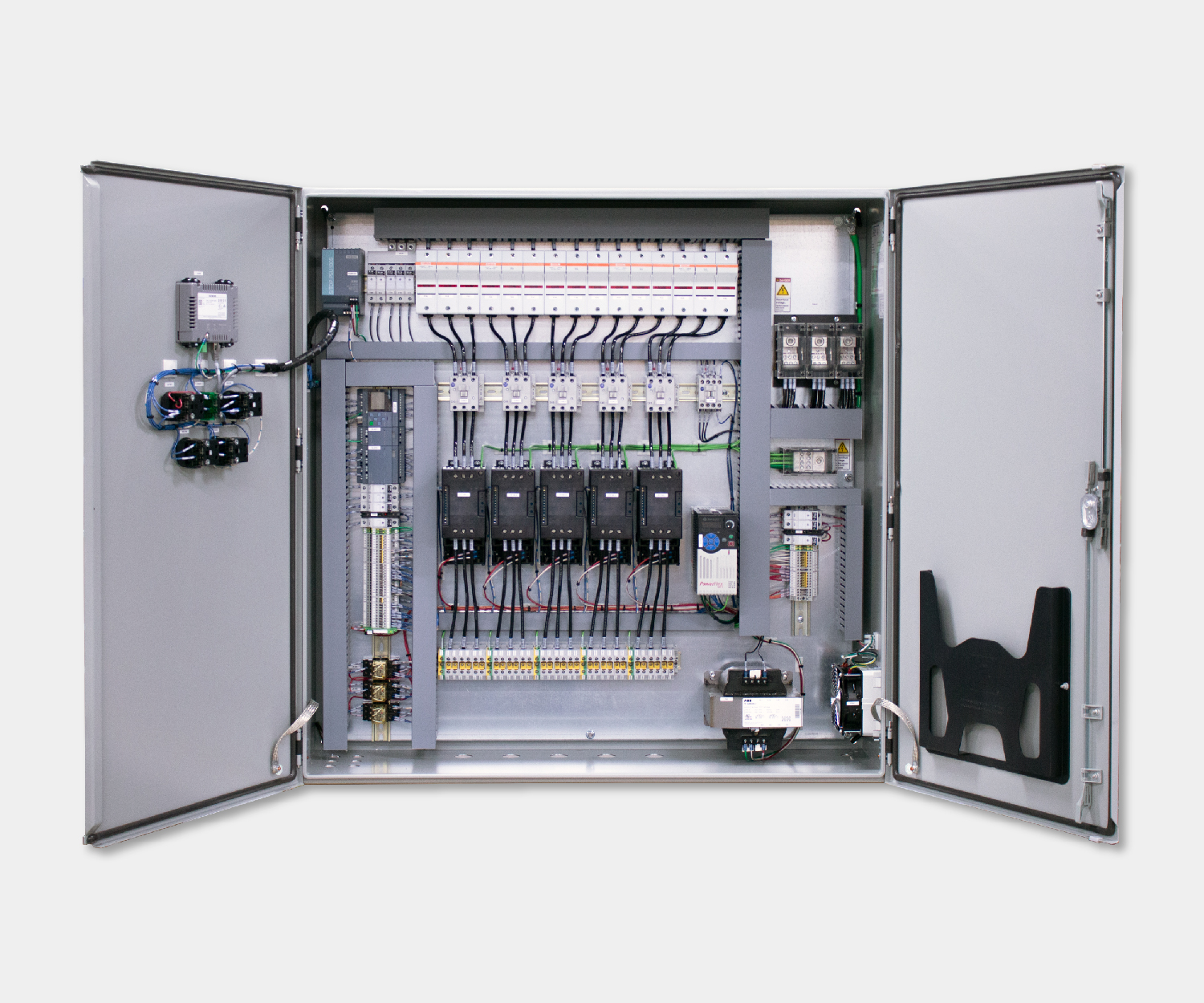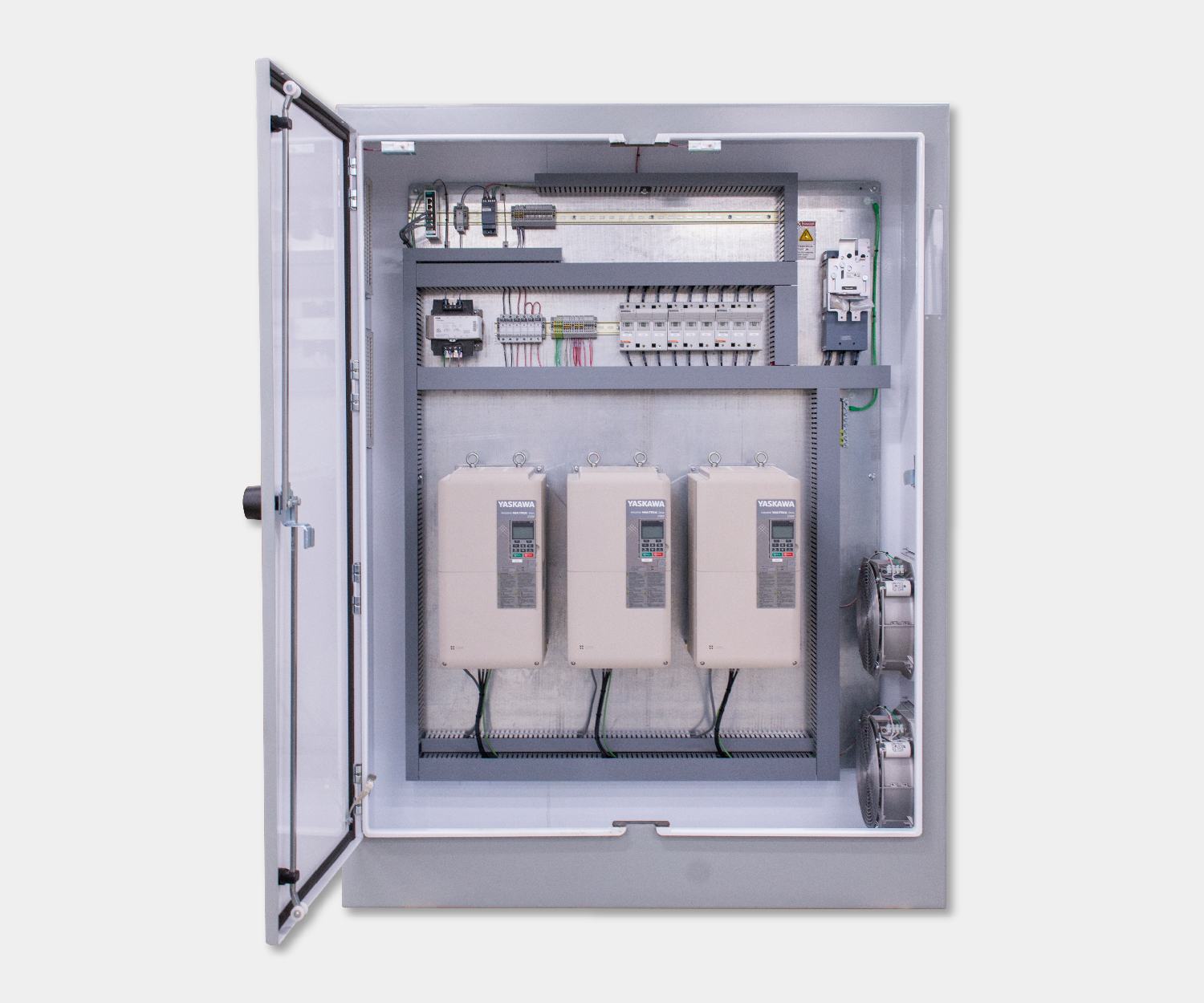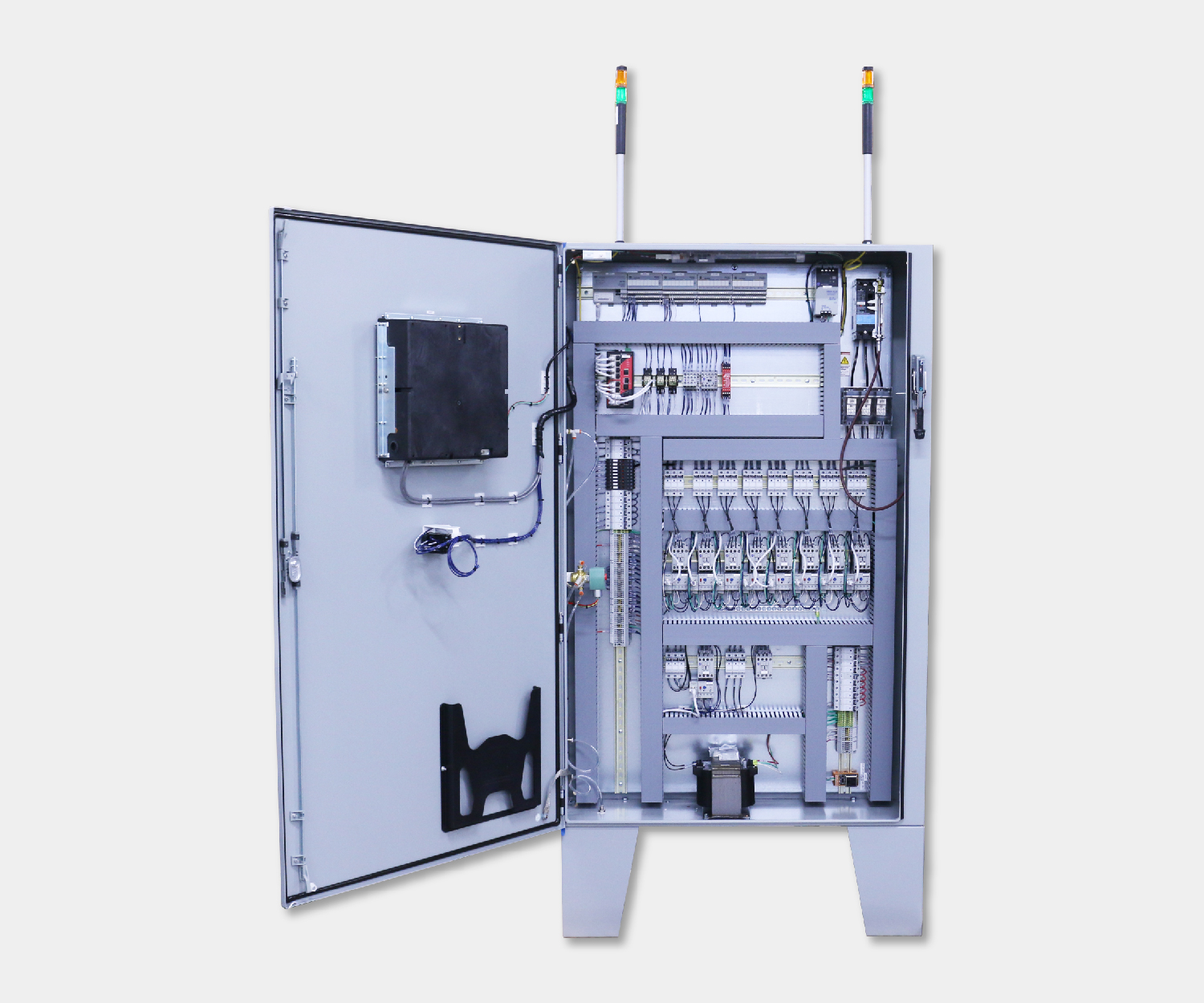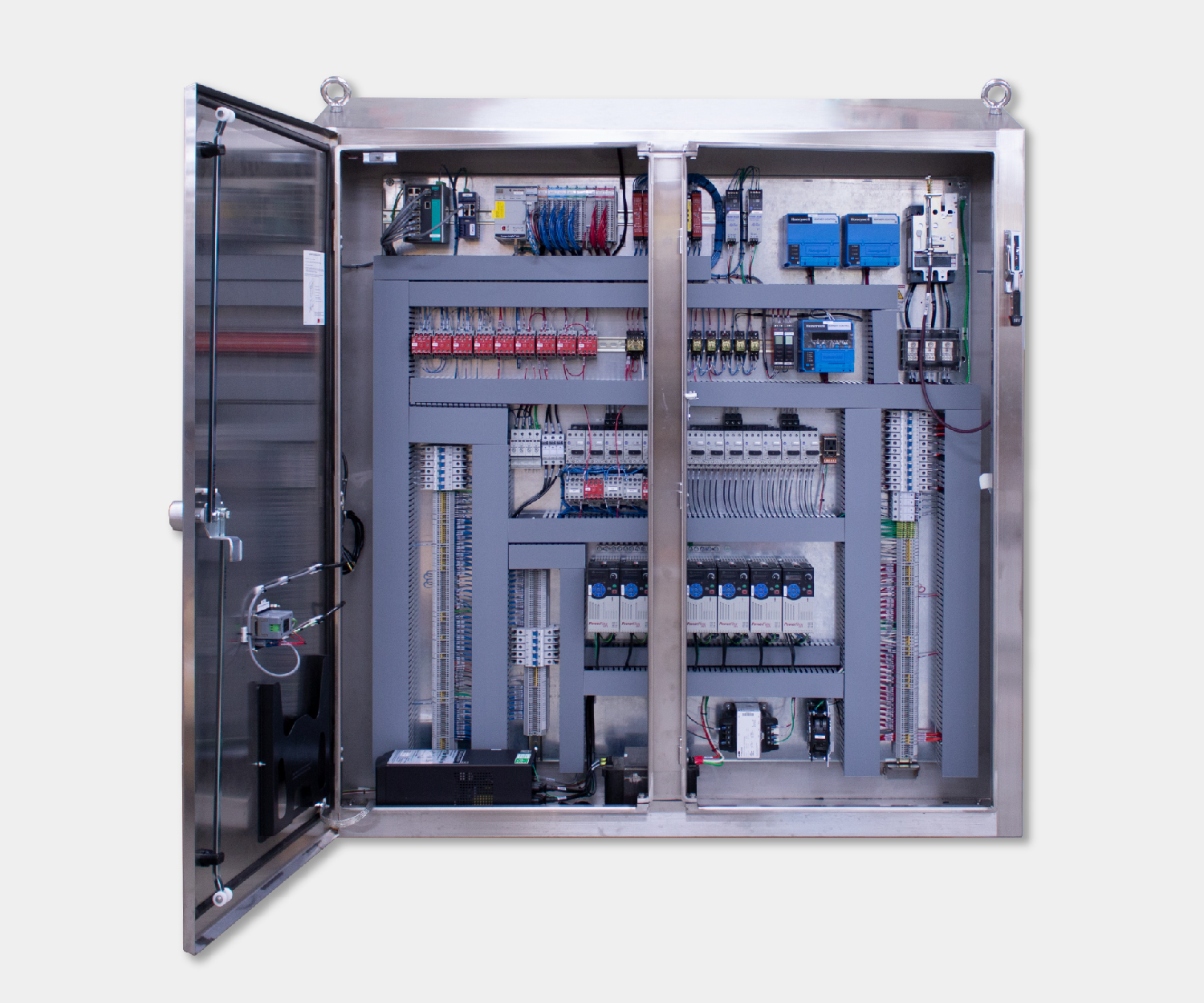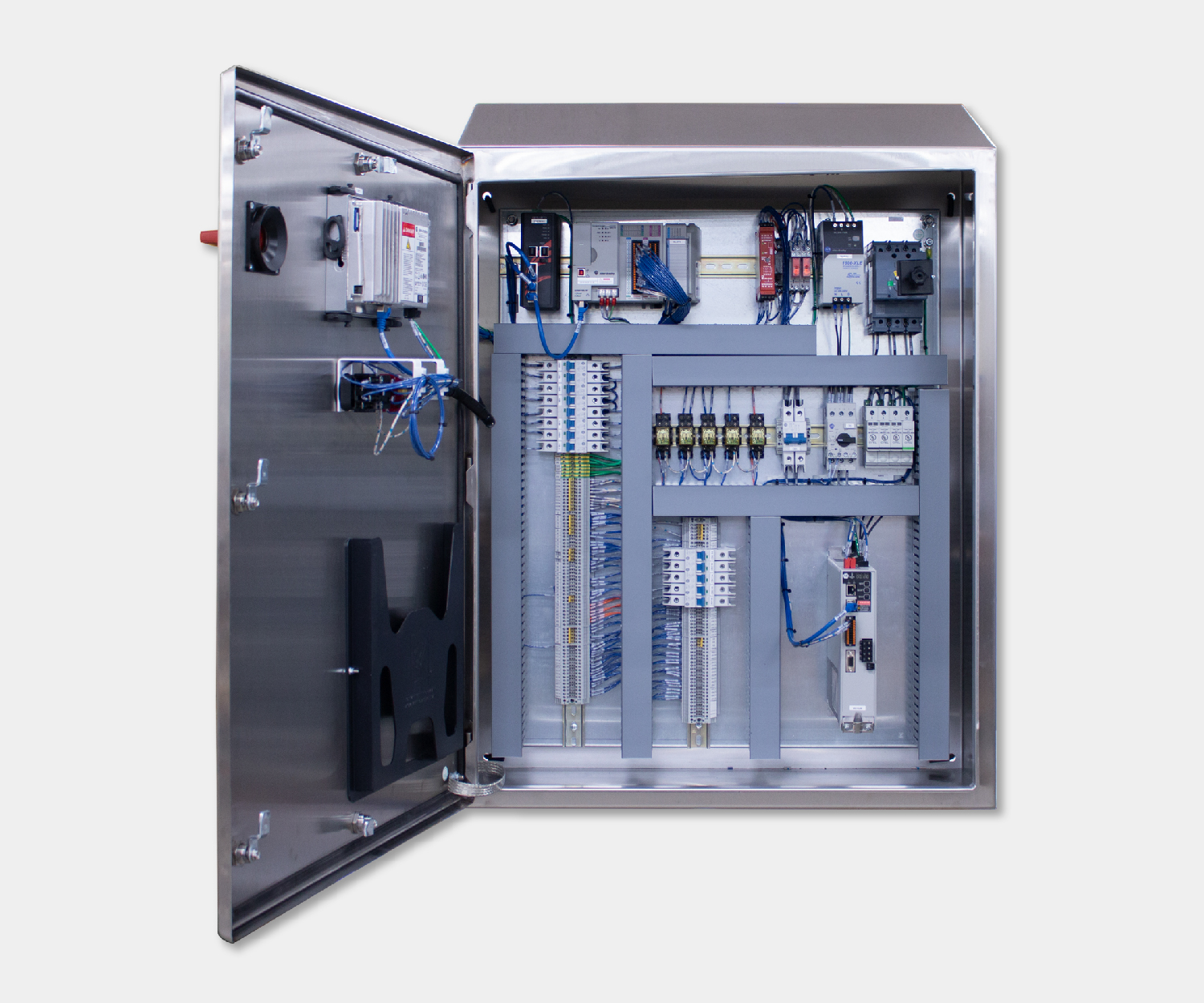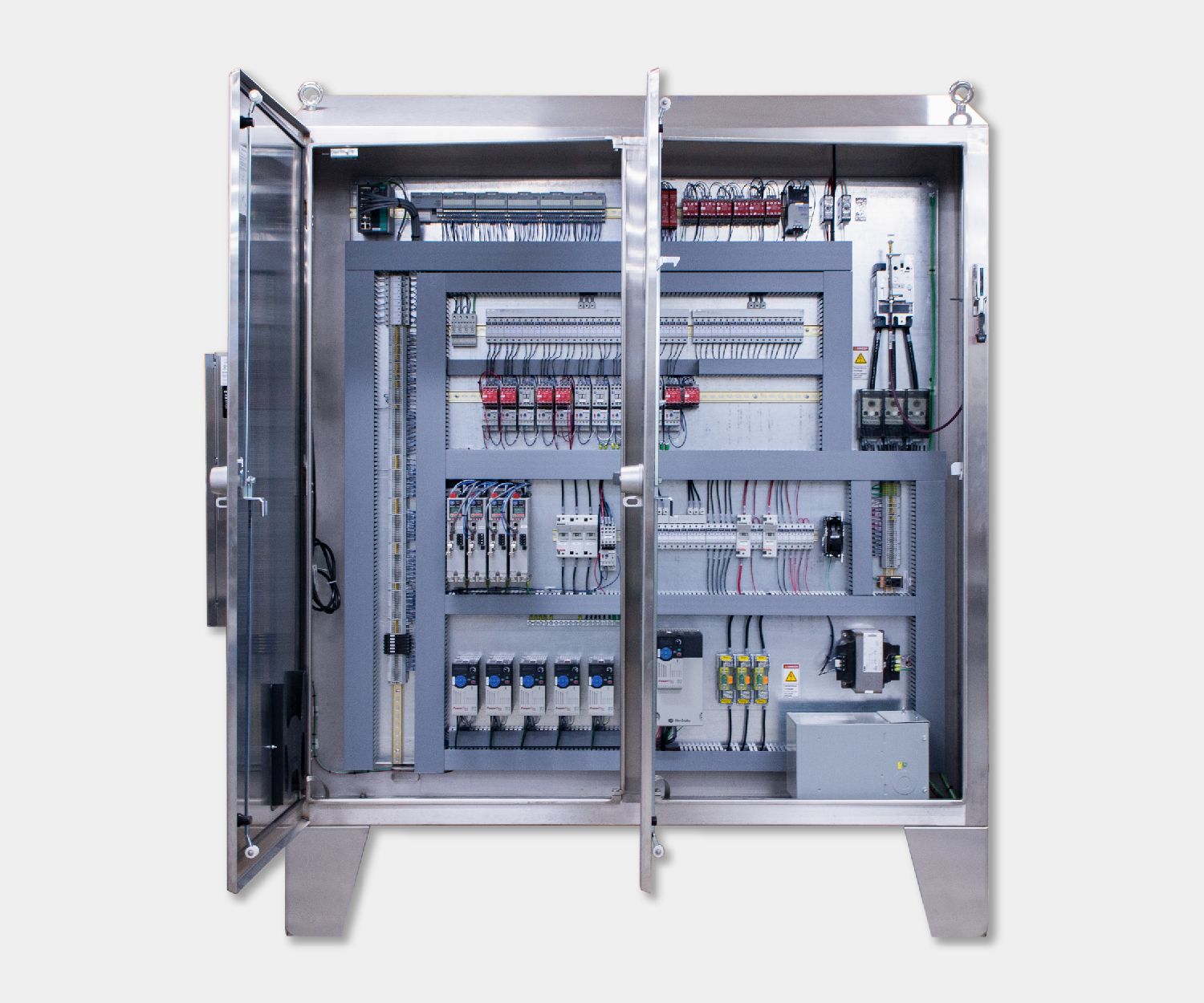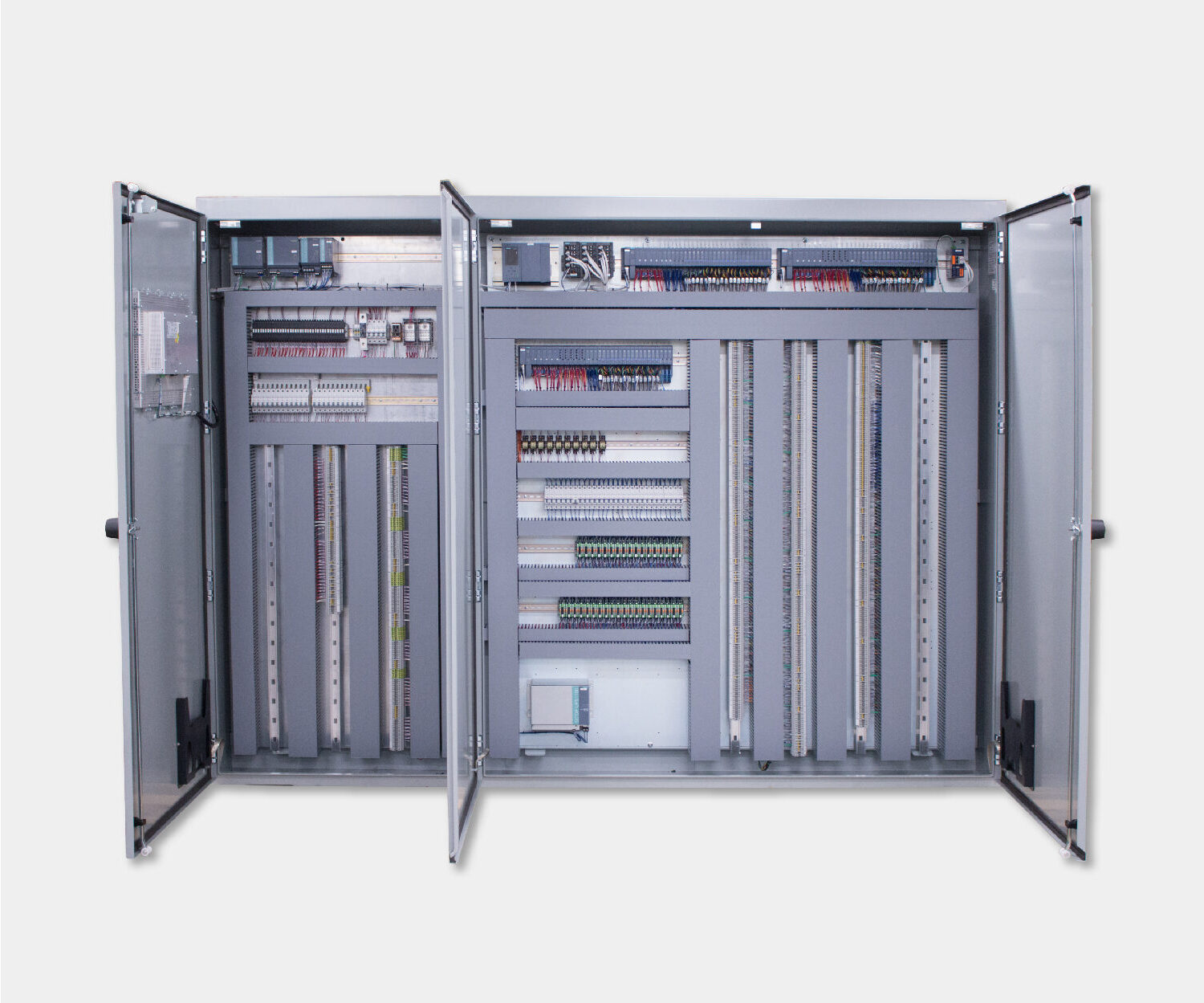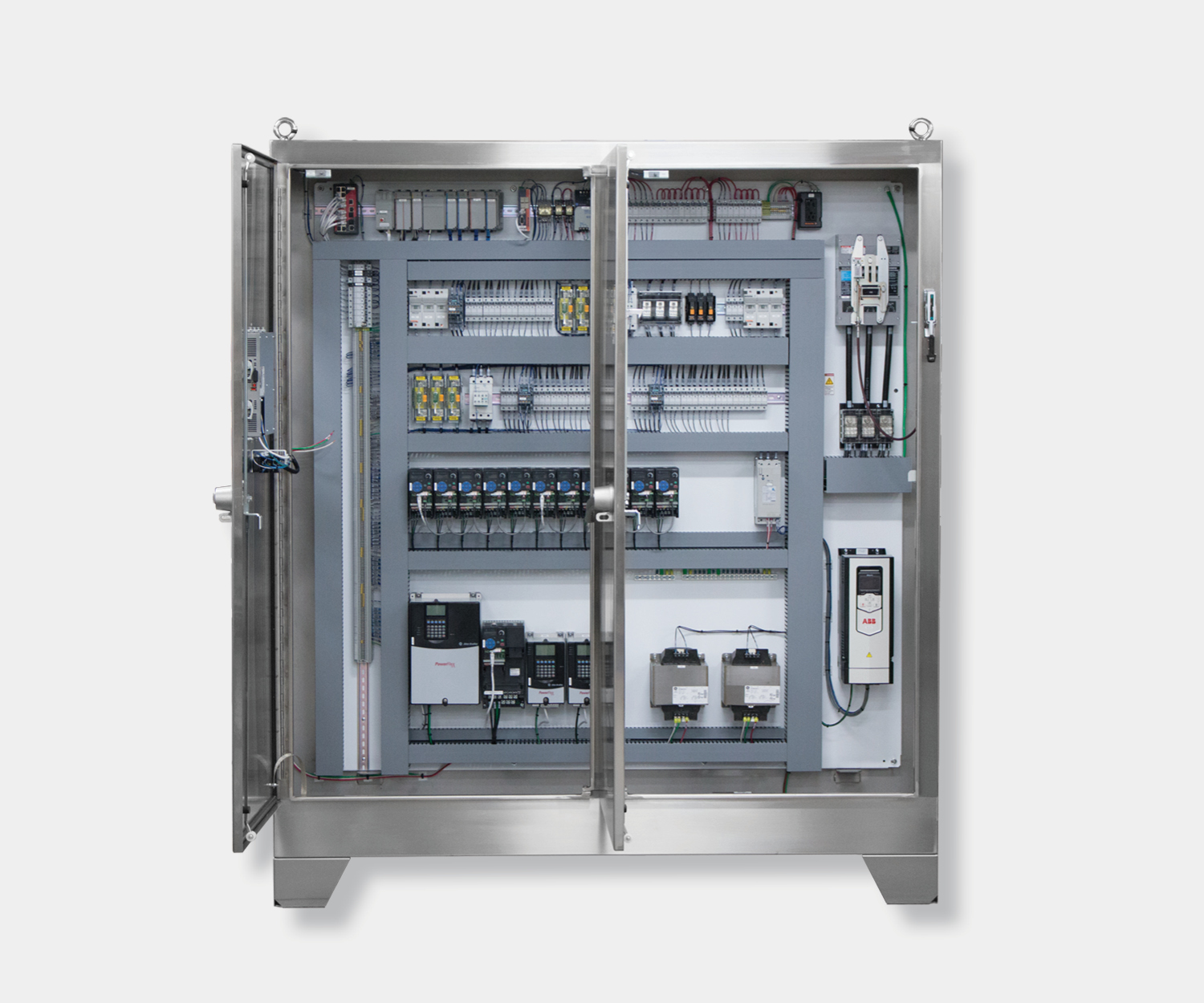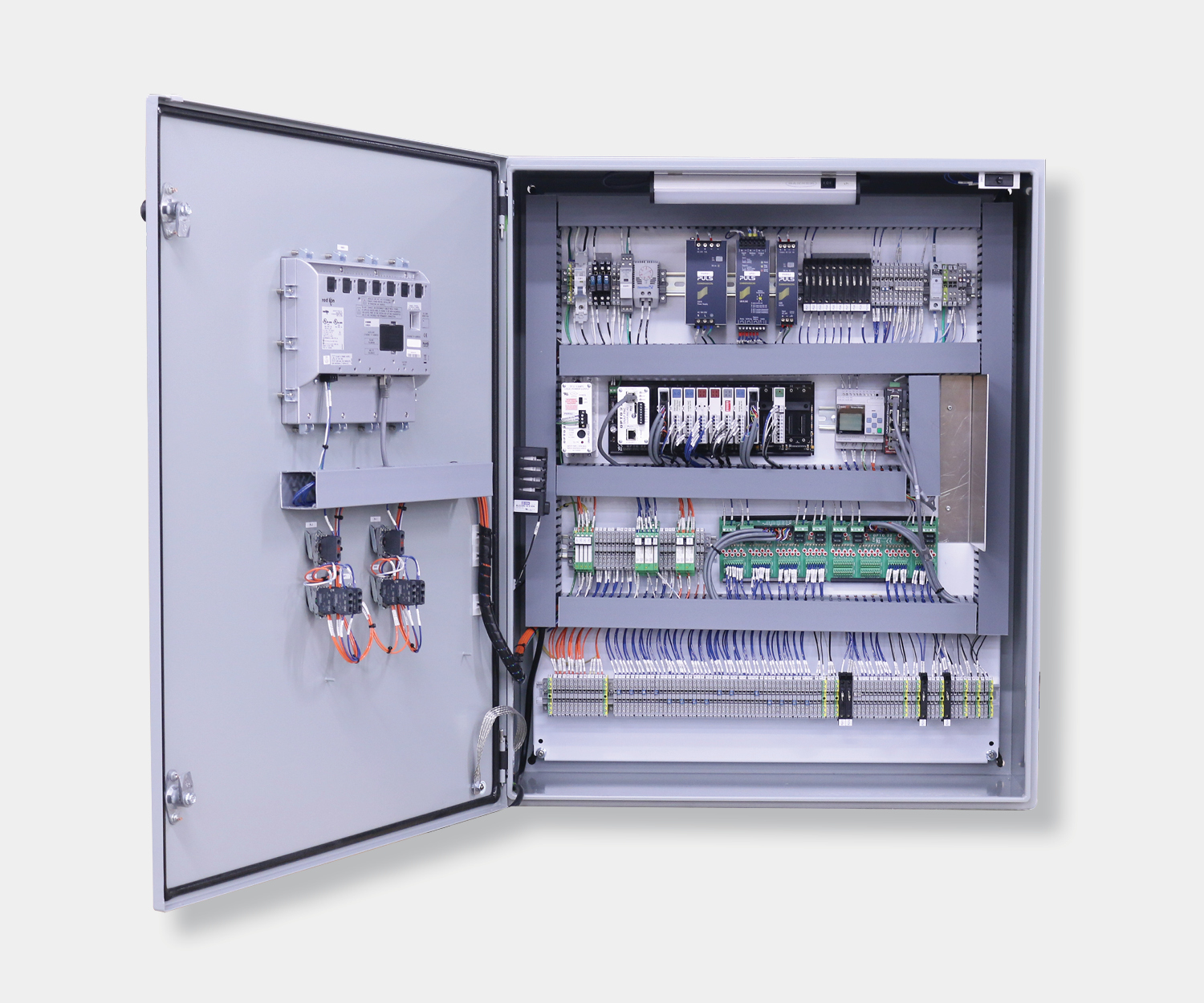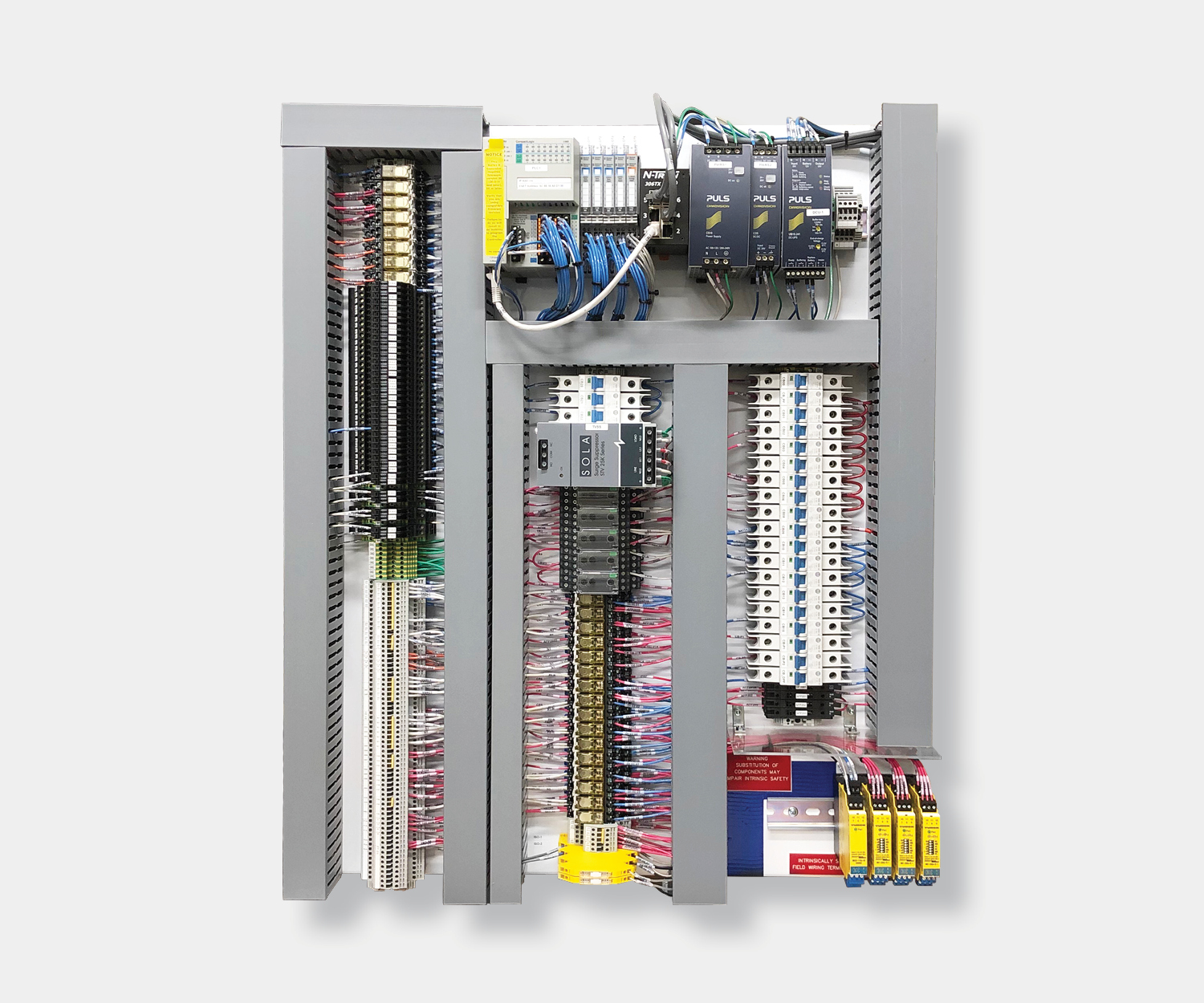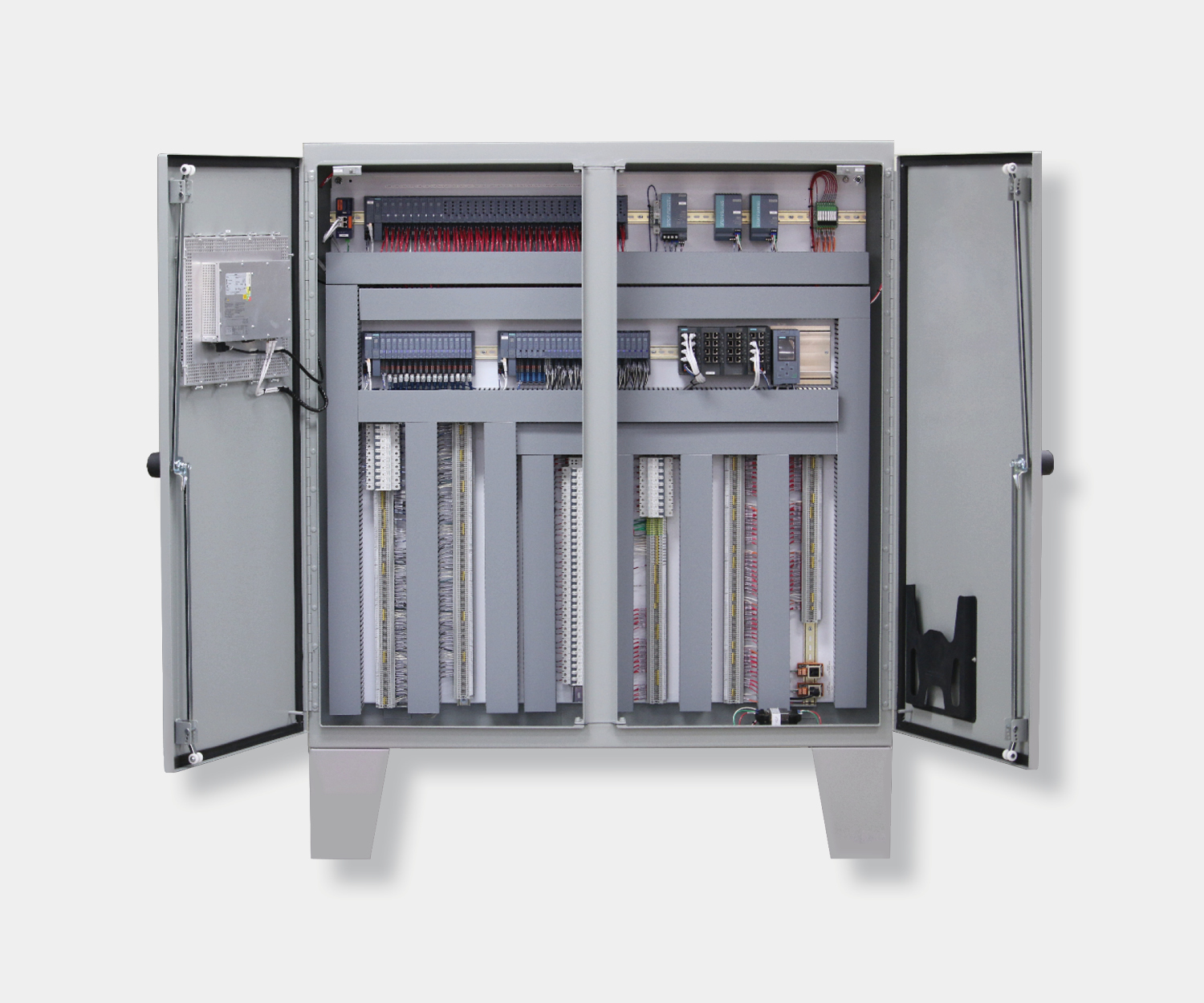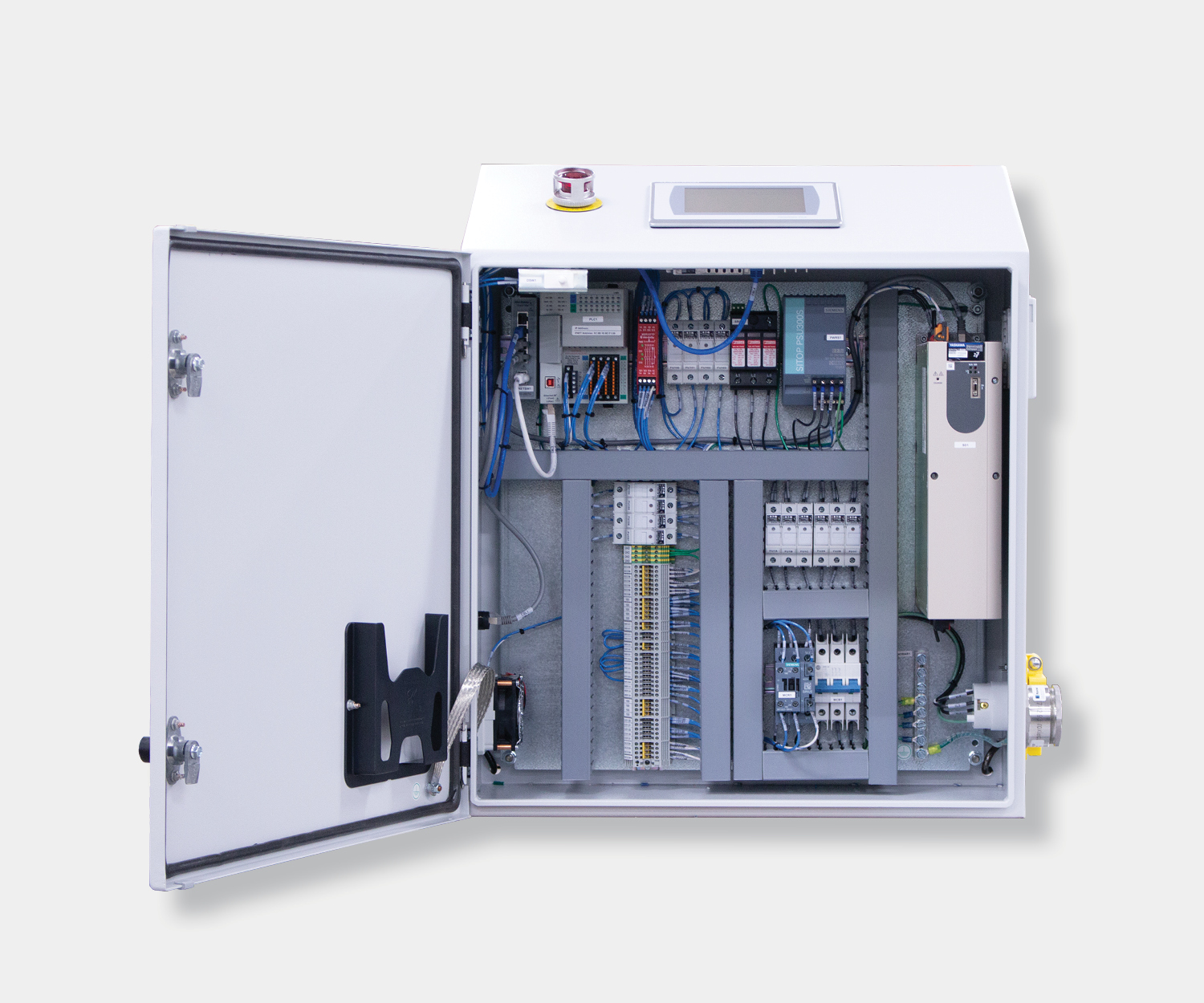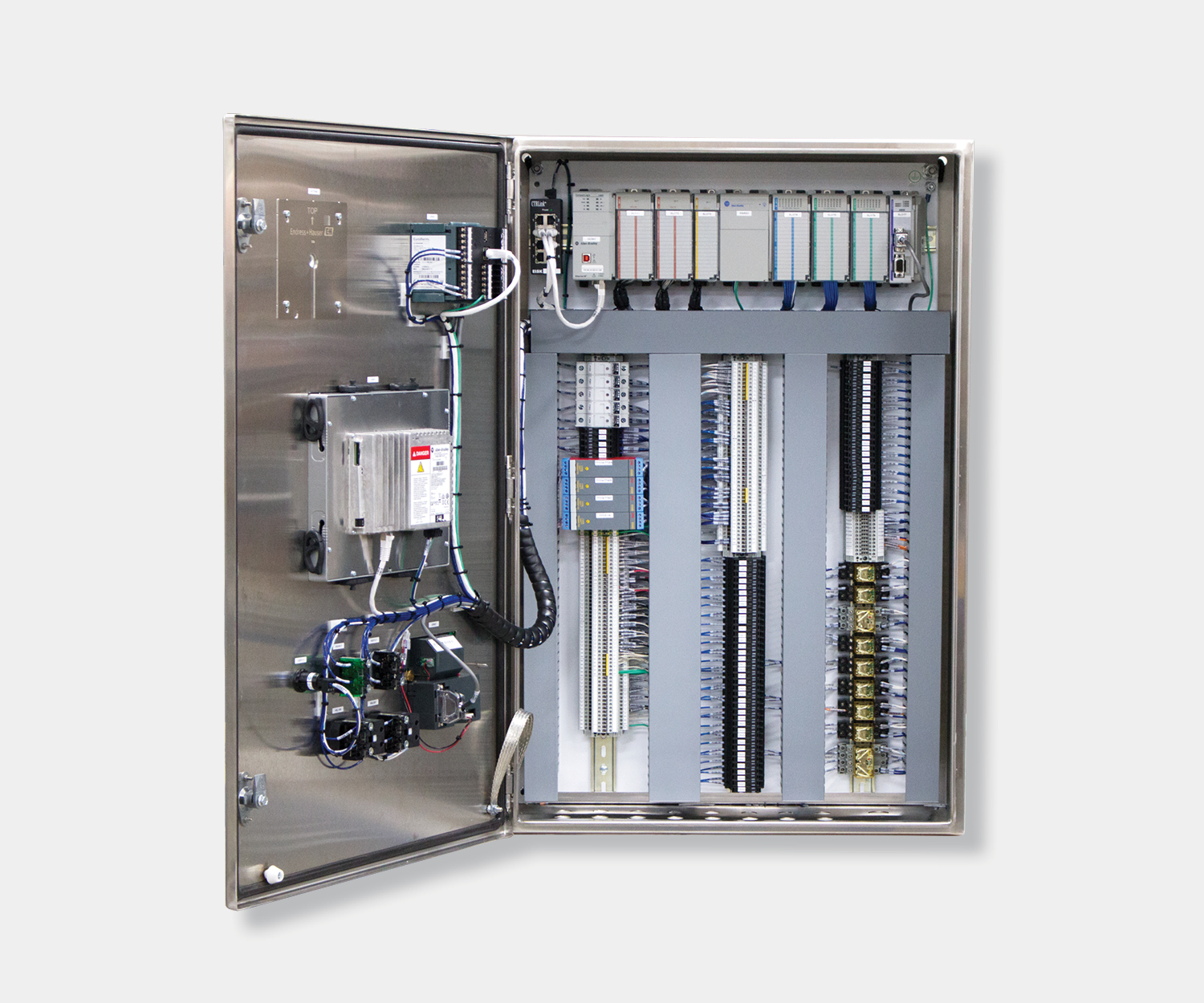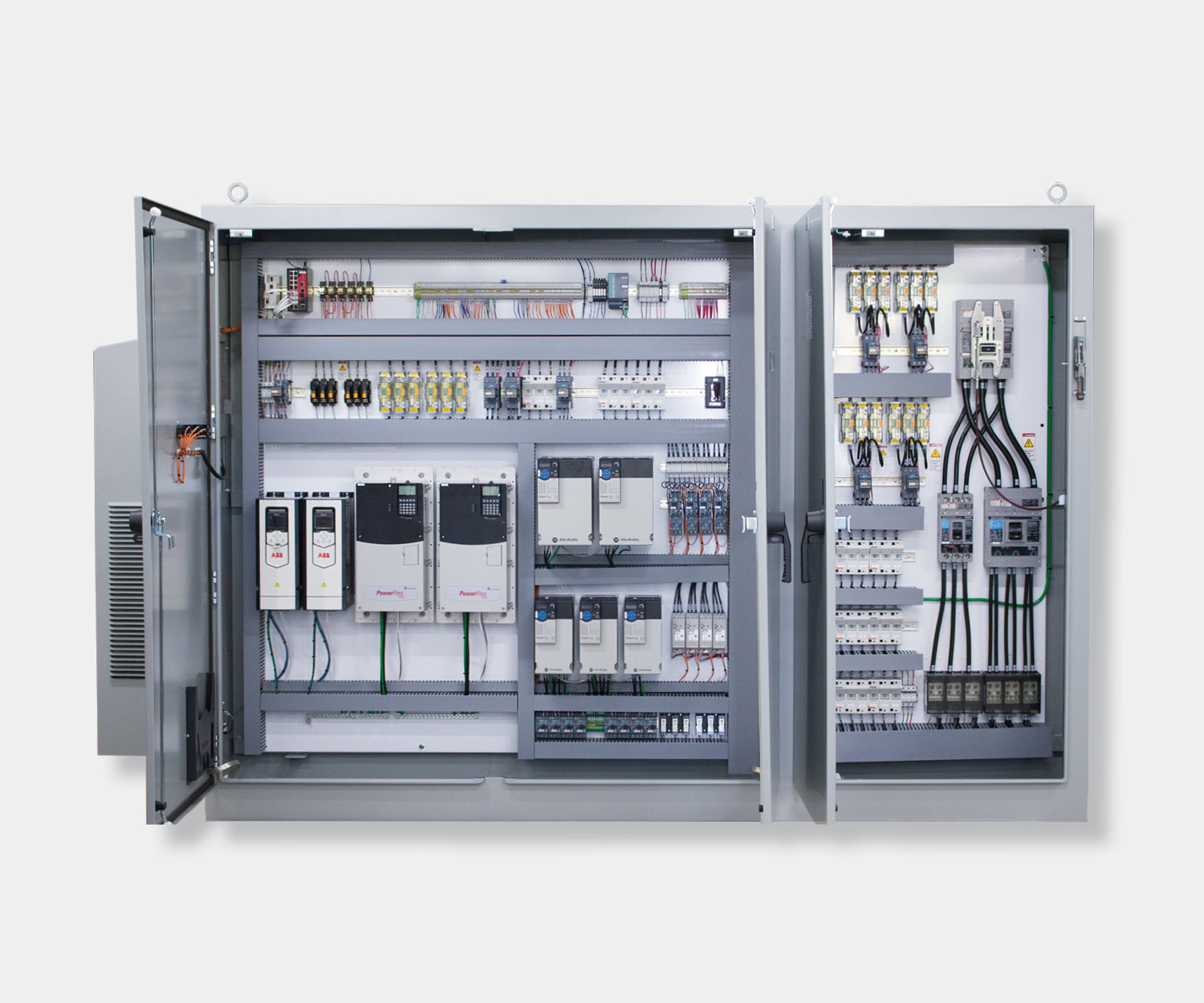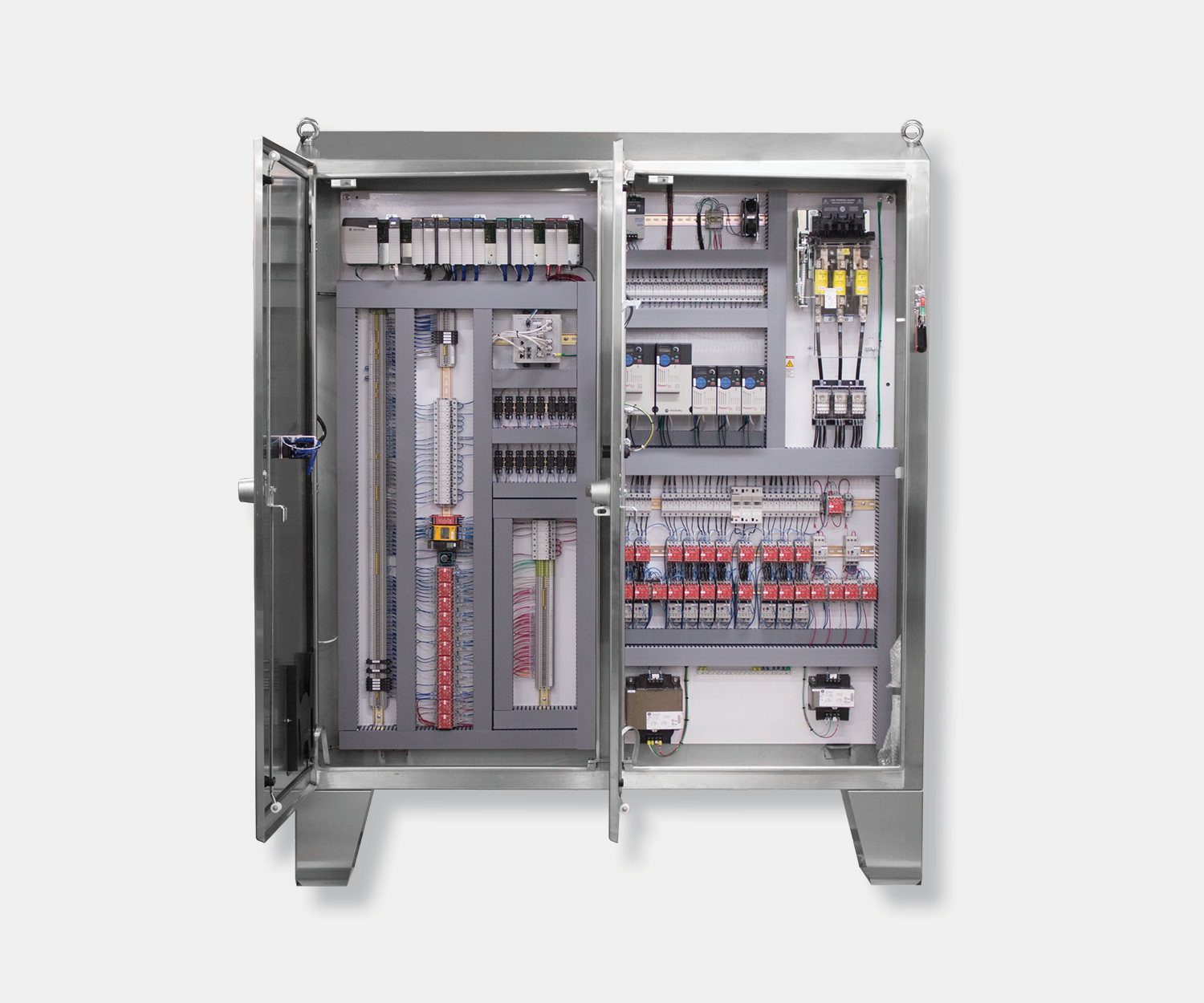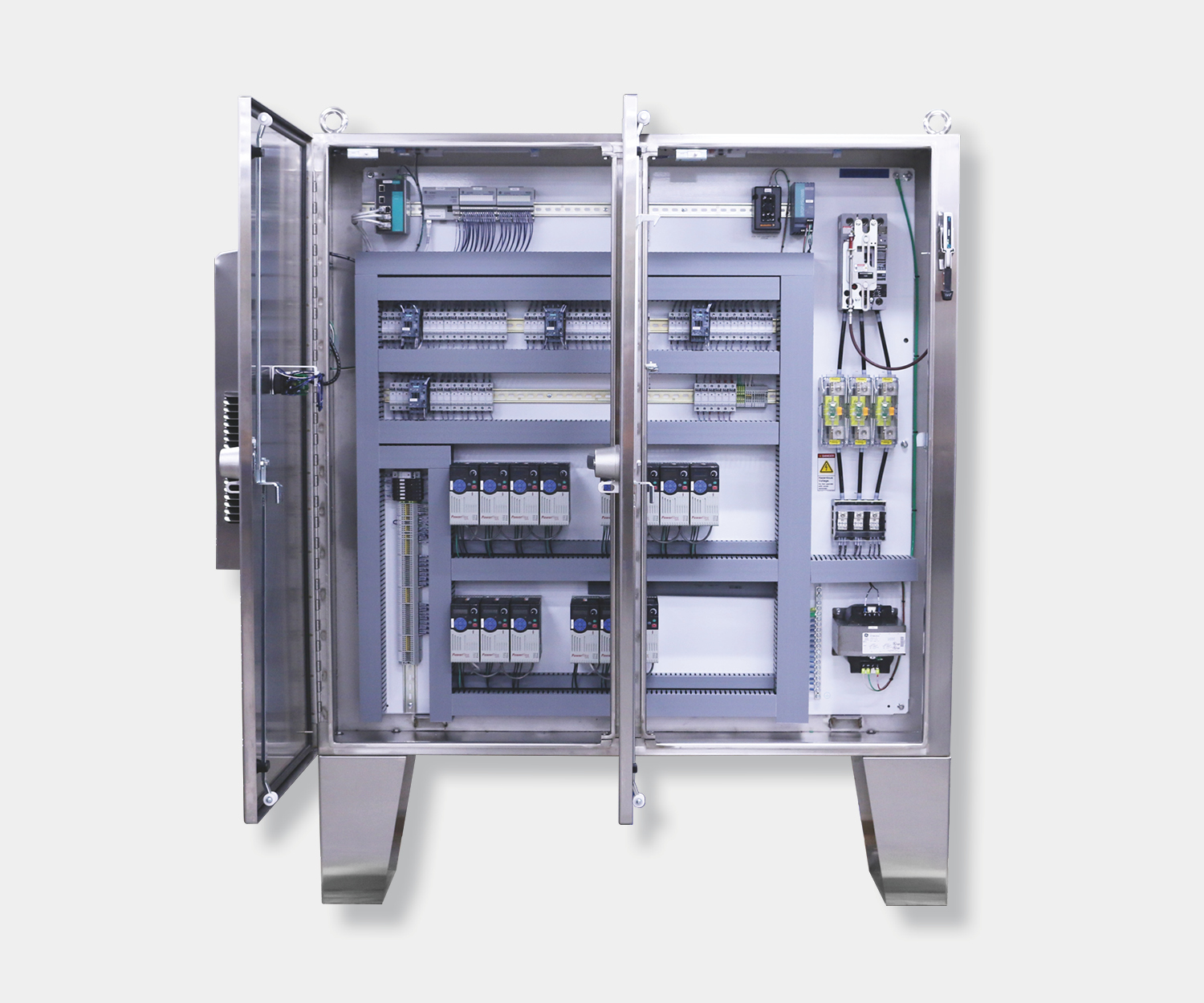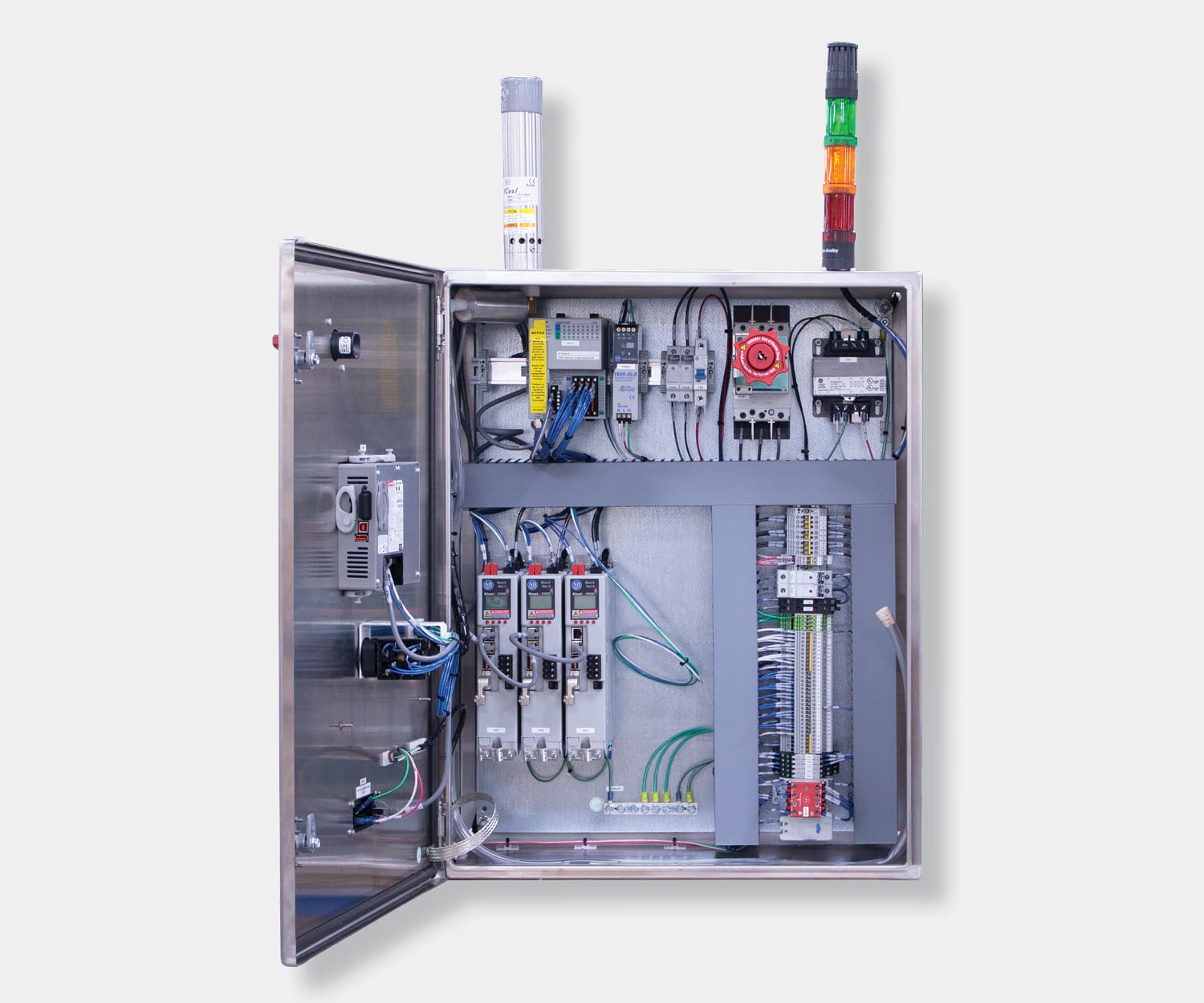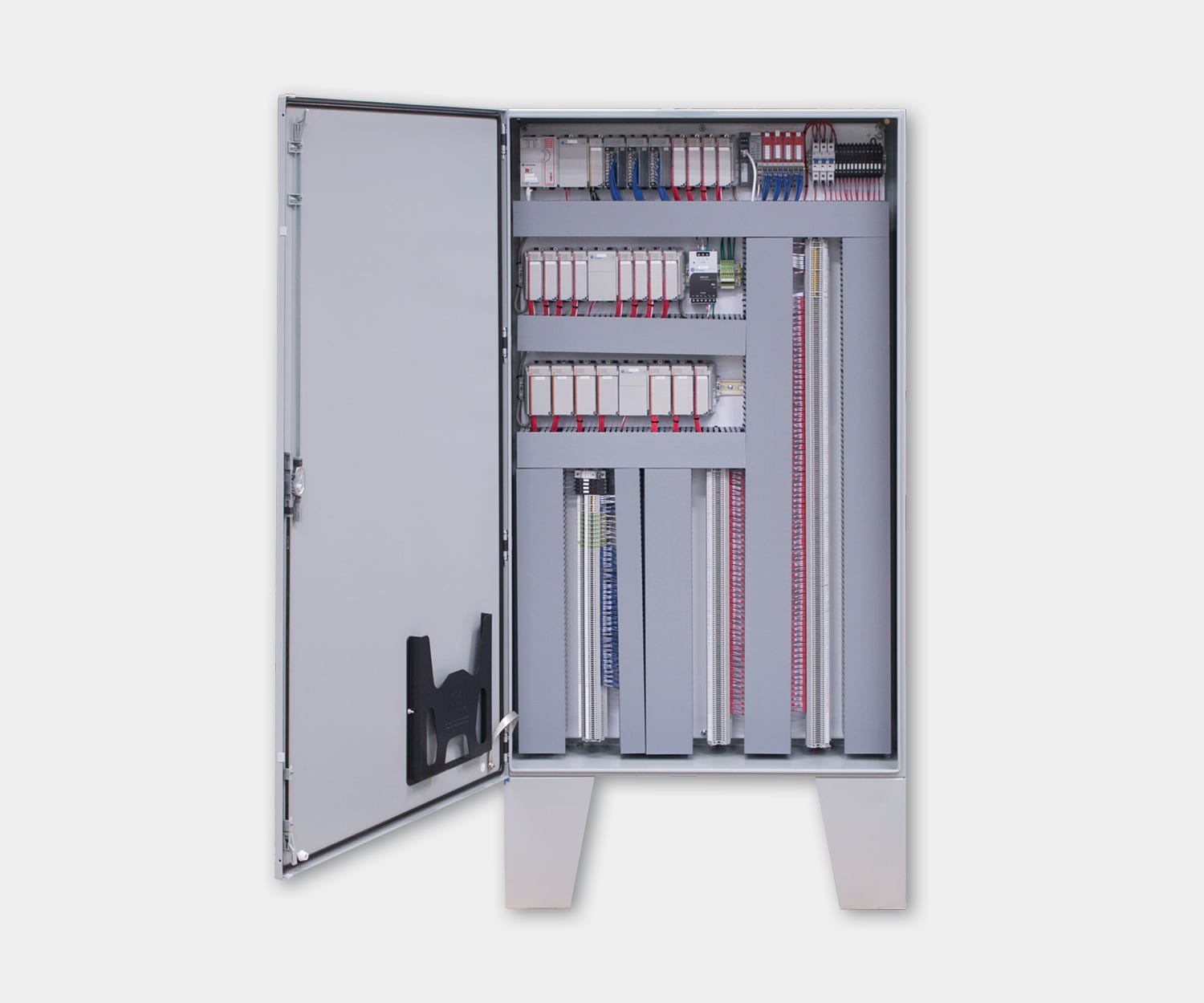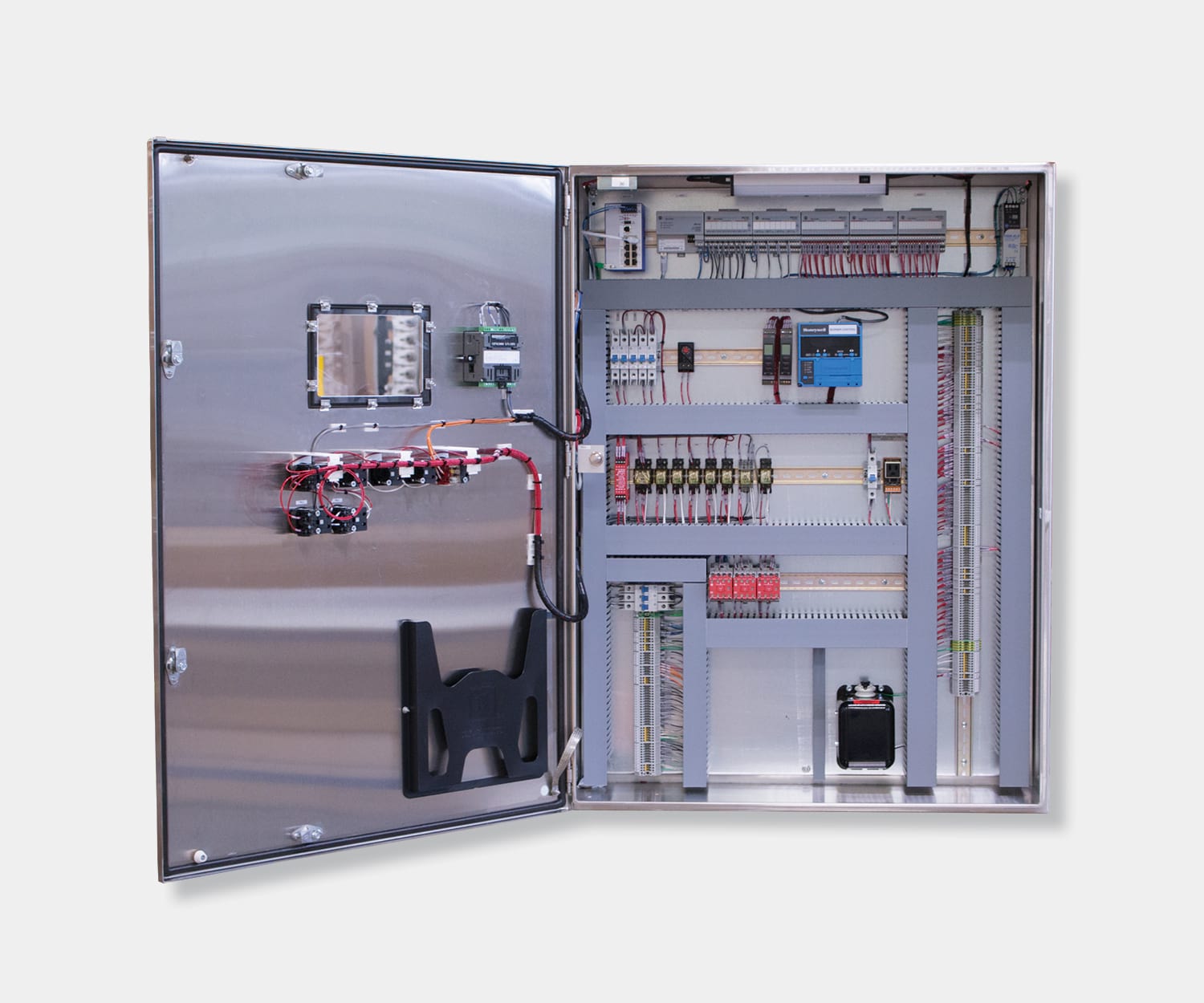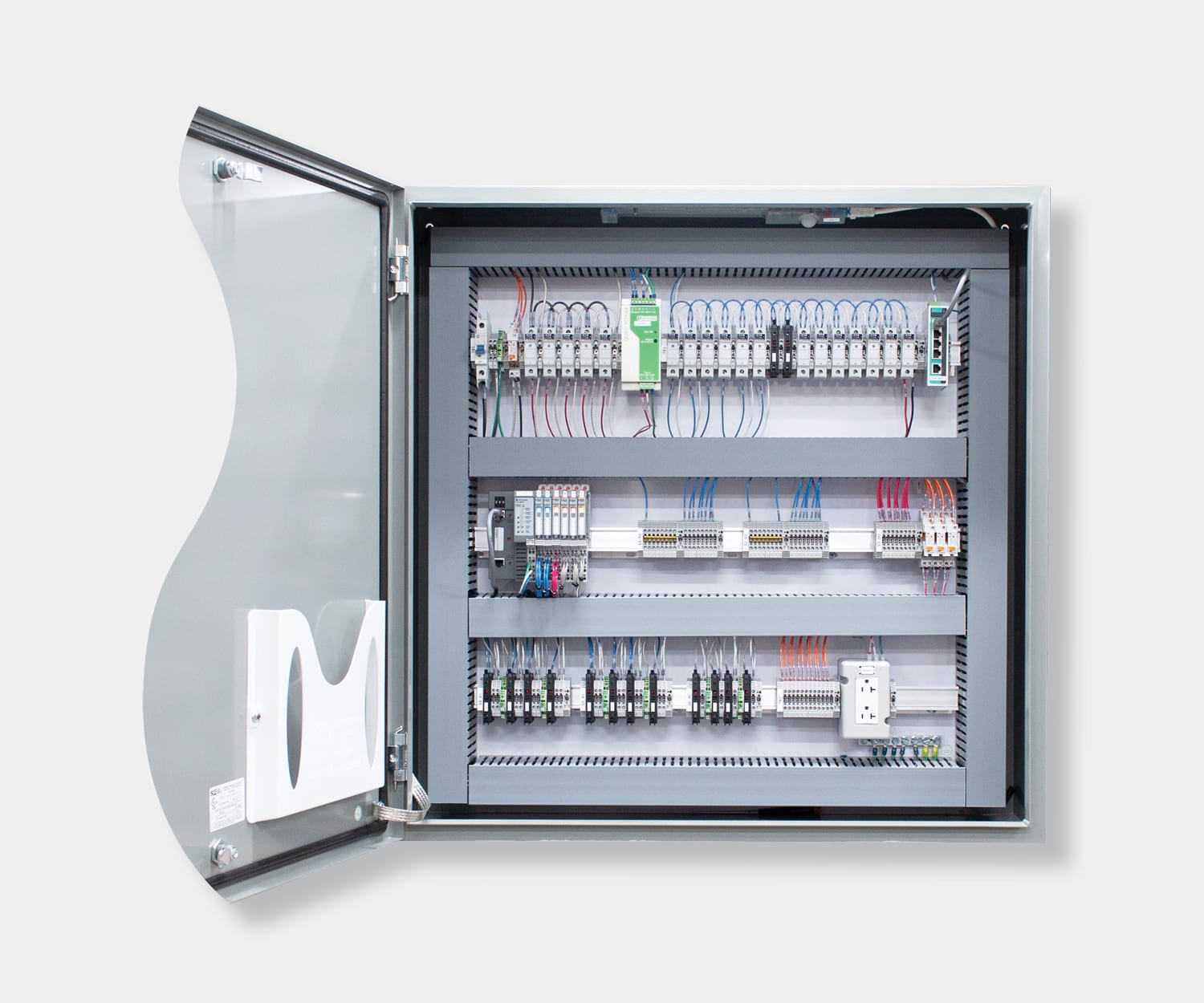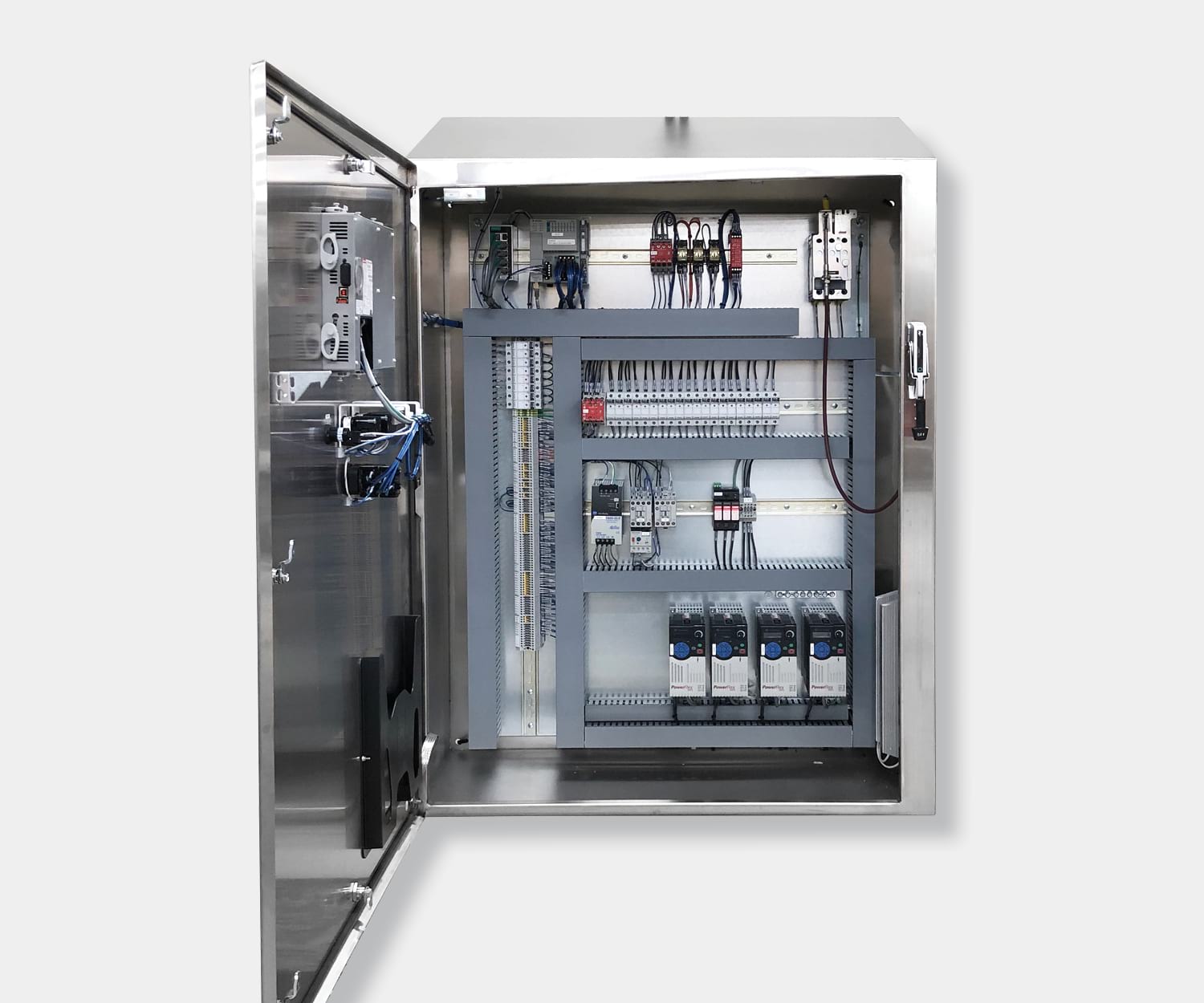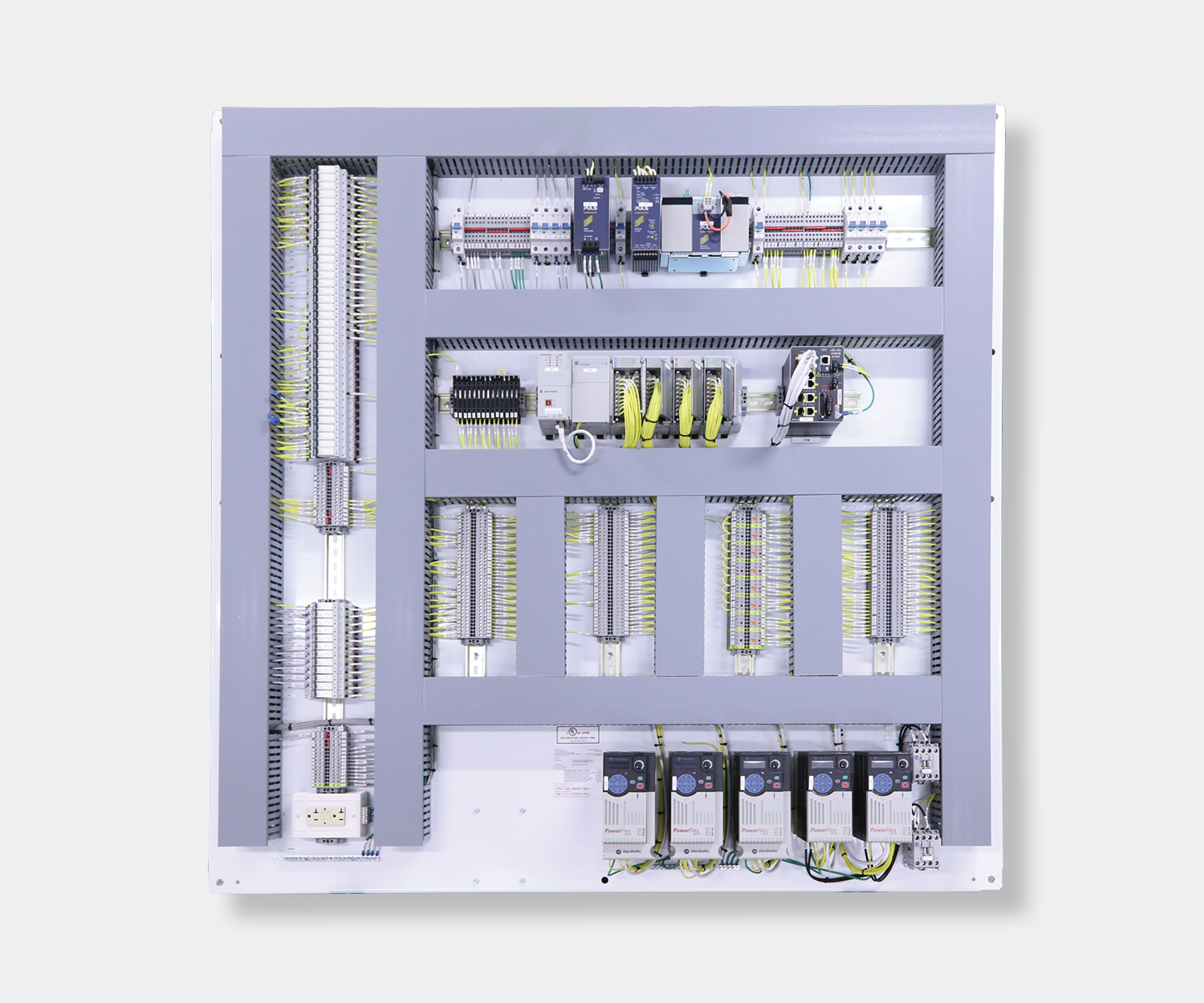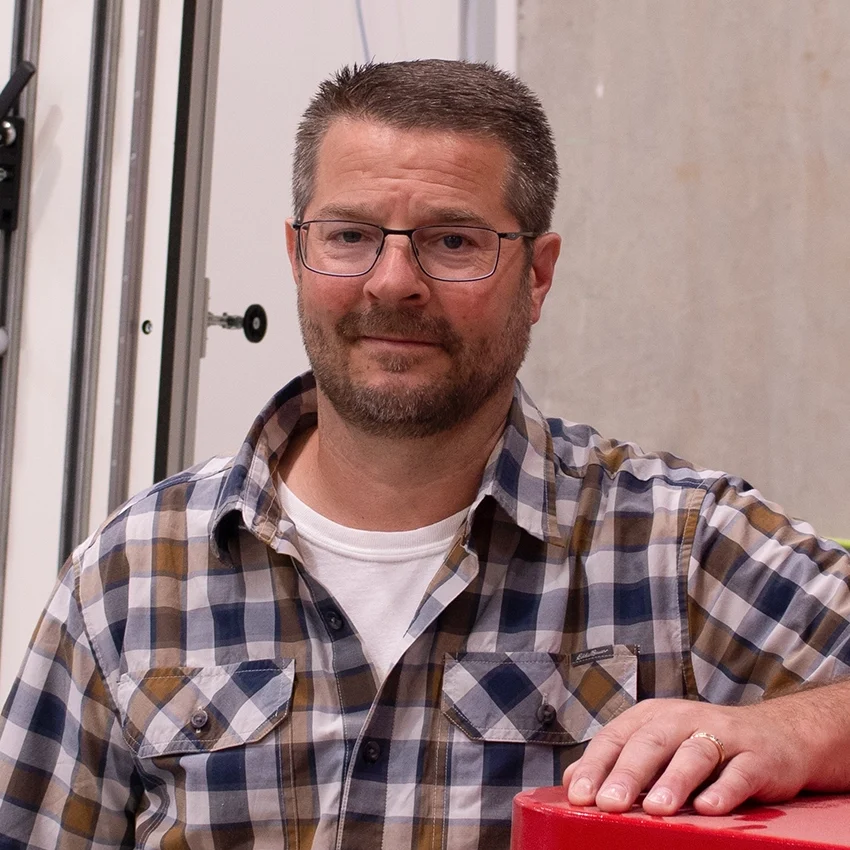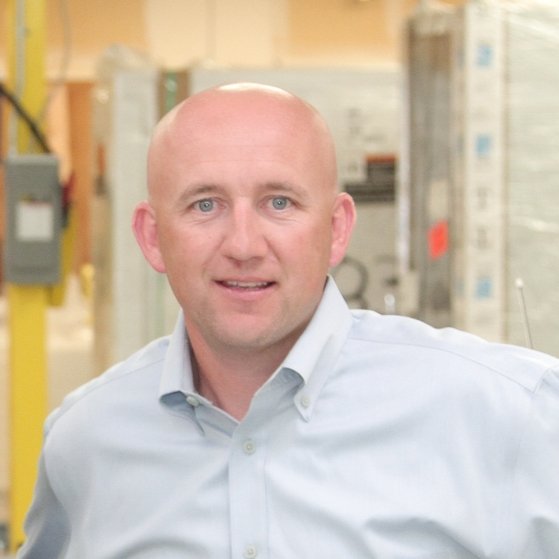There are numerous types of industrial control panels used to operate the wide range of equipment found in manufacturing facilities across the globe. Each of these control panel types contain different components that drive or execute programmed functions such as turning equipment on or off, controlling motor speed, directing various movements, opening or closing valves, and many other operations. In this guide, we will closely examine the most common control panel types, as well as their roles in the manufacturing process.
MCCs
Also known as a motor control center, MCCs use one or more vertical cabinet sections containing a power distribution busbar and mounting locations for motor controllers. Each motor controller in an MCC panel contains a contactor or motor starter, as well as an overload relay for protecting the motor, circuit protection devices such as a circuit breaker and fuses, and a power disconnect switch.
Additionally, MCC panels can contain other controls components such as variable frequency drives (VFDs), programmable logic controllers (PLCs), pushbuttons, indicator lights, and metering devices. MCCs are often installed in expansive manufacturing facilities that need to control numerous motors from a central location, such as a mechanical or electrical room.
PLC Control Panels
PLCs are industrial computers that connect and monitor input devices such as switches, sensors, pushbuttons, and relays. Based on the state of an input device, the PLC can execute programmed outputs such as sound an alarm, open or close a valve, or stop or start a motor.
A PLC control panel is simply an enclosure that houses the PLC and the necessary components to distribute power, carry out programmed outputs, and protect the electrical circuits. Additionally, a PLC control panel may contain an ethernet switch for connecting the PLC to a network, external computer, or HMI. To learn more about PLCs check out our blog covering the Basic Architecture of a PLC
VFD Control Panels
VFDs are a type of motor controller used to control motor speed by varying the input of frequency and voltage. VFDs can also control motor ramp-up and ramp-down during the act of starting or stopping the motor. VFDs provide numerous advantages, including improved system efficiency, reduced energy consumption, matching the speed and torque of the motor to the process requirements, and reducing the mechanical stress on a machine.
A VFD control panel can consist of a single or multiple VFDs, as well as power distribution components, circuit protection and motor protection devices, line reactors or harmonic filters, motor starters, and a PLC.
HMI Panels or Operator Stations
Operator stations or human-machine interface (HMI) panels contain an industrial display that uses graphical illustrations representing devices and machines in a system. HMIs allow operators to interact with their industrial control systems and execute commands, as well as monitor equipment status such as run time, faults, warnings, production levels, and various parameters.
Operator stations or HMI panels are often standalone enclosures mounted directly to or near a machine containing the industrial display, circuit protection, and power distribution devices. Alternatively, HMIs can be mounted on the door of a larger main control panel.
Motor Starter Panels
Motor starters are electromagnetically operated devices that start and stop a motor. Typically, a motor starter assembly includes an overload relay to provide electrical overload protection for the connected motor. A motor starter panel may contain one or multiple motor starters housed in an enclosure, as well as selector switches or pushbuttons to control the state of the motor, circuit protection components, power distribution, and a power disconnect switch.
Hazardous Location Panels
As their name suggests, hazardous location panels are specifically designed for safe operation in hazardous locations. Hazardous locations are classified by a set of divisions, zones, and categories, which define the general nature of the hazardous material present, the level of risk associated with the location, and the specific type of hazardous materials present. Based on the location’s classification, a hazardous location control panel is designed and assembled with the necessary materials, safety devices, and construction to operate safely within the intended environment.
Specific design characteristics of a hazardous location panel may include explosion-proof enclosures, purge systems to maintain clean air around the panel, and NEMA 4X rated enclosures made of stainless steel, aluminum, polycarbonate, or fiberglass. Common applications for hazardous location panels include oil refineries, landfills, water purification plants, or any area exposed to flammable gases/vapors, combustible dust, or flammable fibers.
About Process Solutions
Located near Seattle, Washington, Process Solutions has over 30 years of experience providing high quality and reliable control systems. With over 100 engineers and technicians on staff and an output of over 3,000 control panels per year, Process Solutions is the Northwest largest control systems integrator. Process Solutions’ control systems services include custom control panel design, build, and commissioning, PLC and HMI programming, robot system integration, energy management and refrigeration systems, SCADA software, and machine monitoring software.
